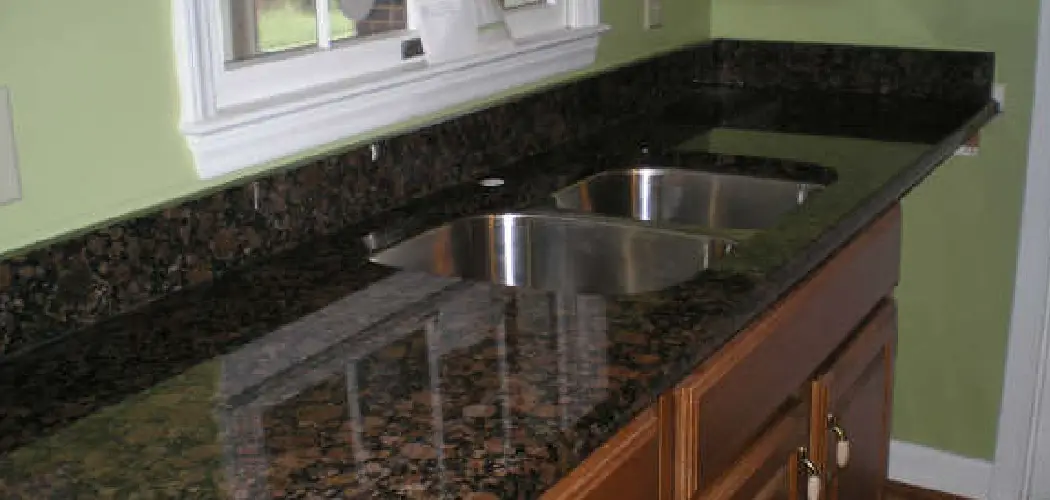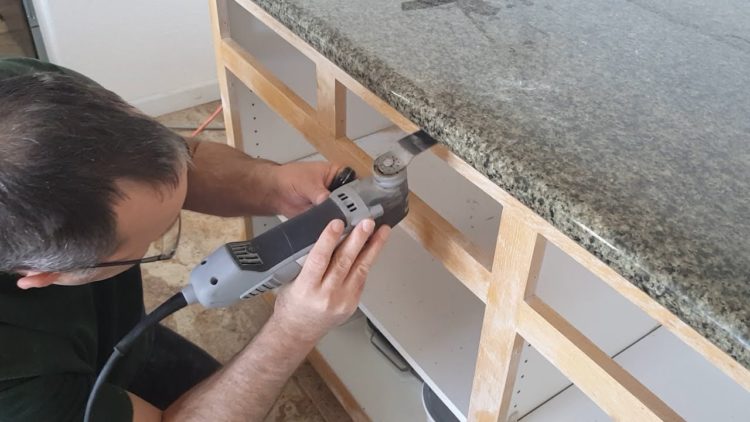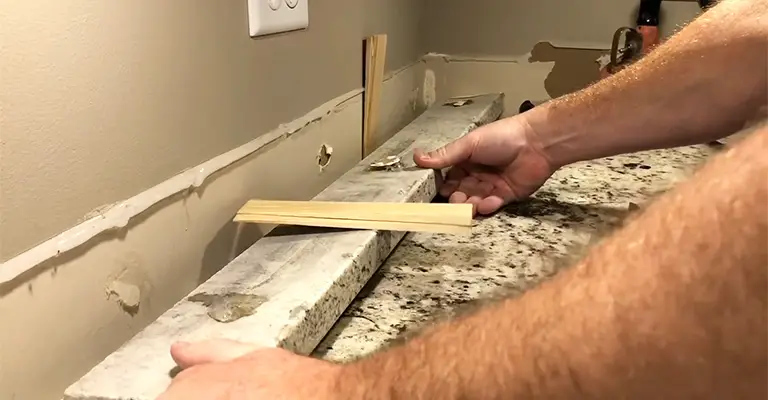Understanding the Challenges

Removing granite countertops without damaging cabinets is a delicate task that requires careful planning and execution. While it may seem straightforward, there are several potential risks involved that can lead to costly repairs or even necessitate replacing your cabinets entirely.
Common Mistakes Homeowners Make, Removing granite countertops without damaging cabinets
Homeowners often underestimate the complexity of removing granite countertops, leading to common mistakes that can result in cabinet damage. Here are some of the most frequent errors:
- Using Excessive Force: Applying excessive force during removal can easily crack or splinter cabinet doors, drawers, or even the cabinet frames themselves.
- Improper Tool Selection: Using inappropriate tools, such as a hammer or chisel, can cause significant damage to the cabinets.
- Ignoring the Importance of Support: Failing to properly support the countertop during removal can lead to the countertop falling and crushing cabinets or appliances.
- Neglecting Safety Precautions: Ignoring safety precautions, such as wearing safety glasses and gloves, can result in injuries and increase the risk of damaging the cabinets.
Types of Cabinet Damage
Understanding the types of damage that can occur to cabinets during granite countertop removal is crucial for preventing these issues. Here are some common examples:
- Scratches and Gouges: These can be caused by tools used during removal, particularly if they are not sharp or if excessive force is applied.
- Cracks and Splinters: These can result from excessive force or improper support, especially when removing the countertop from the cabinets.
- Dents and Indentations: These can occur when the countertop is dropped or mishandled during removal, potentially damaging the cabinet surfaces.
- Structural Damage: In severe cases, the cabinet frames themselves can be damaged, leading to instability and requiring extensive repairs.
Essential Tools and Techniques: Removing Granite Countertops Without Damaging Cabinets

Removing granite countertops without damaging cabinets requires careful planning and the use of specialized tools. The process involves detaching the countertop from the cabinets, cutting it into manageable pieces, and safely removing the debris. By understanding the specific tools and techniques involved, you can minimize the risk of damage and ensure a smooth removal process.
Choosing the Right Tools
The tools required for removing granite countertops without damaging cabinets depend on the specific installation and the countertop’s size and shape. Here’s a comprehensive list of essential tools, along with their applications and safety precautions:
- Circular Saw with Diamond Blade: A circular saw with a diamond blade is crucial for cutting through granite. Ensure the blade is sharp and properly secured before use. Wear safety goggles and gloves to protect your eyes and hands.
- Reciprocating Saw with a Demolition Blade: A reciprocating saw with a demolition blade can be used for cutting through the countertop’s adhesive and removing it from the cabinets. It’s important to use a blade specifically designed for demolition, as it can handle tough materials. Wear safety goggles, gloves, and hearing protection.
- Hammer and Chisel: A hammer and chisel can be used to break apart the countertop into smaller pieces for easier removal. Choose a chisel with a sturdy head and a sharp edge. Wear safety goggles and gloves to protect yourself from flying debris.
- Pry Bar: A pry bar can be used to gently lift the countertop from the cabinets, breaking the adhesive bond. Use caution when using a pry bar, as excessive force can damage the cabinets.
- Utility Knife: A utility knife can be used to cut through the caulk or sealant around the countertop. Use a sharp blade and avoid applying excessive pressure.
- Dust Mask: A dust mask is essential to protect your respiratory system from dust and debris generated during the removal process.
- Work Gloves: Work gloves protect your hands from cuts, scrapes, and dust.
- Safety Glasses: Safety glasses are crucial to protect your eyes from flying debris.
- Hearing Protection: Hearing protection is necessary when using power tools like circular saws and reciprocating saws.
Techniques for Safe and Efficient Removal
Here are some techniques for safely and efficiently removing granite countertops without damaging cabinets:
- Disconnecting Utilities: Before starting the removal process, disconnect any utilities connected to the countertop, such as the sink, faucet, and garbage disposal.
- Removing Caulk and Sealant: Using a utility knife, carefully remove the caulk or sealant around the countertop.
- Cutting the Countertop: Using a circular saw with a diamond blade, cut the countertop into manageable pieces. Make sure to use a steady hand and cut along the lines you have marked.
- Removing the Countertop: Once the countertop is cut into pieces, use a pry bar to gently lift the pieces from the cabinets. Use caution to avoid damaging the cabinets.
- Removing Adhesive: Use a reciprocating saw with a demolition blade to remove the adhesive that holds the countertop to the cabinets.
- Cleaning Up: Once the countertop is removed, clean up the debris and dispose of it properly.
Tips for Precision and Safety
- Mark Cutting Lines: Use a pencil to mark the cutting lines on the countertop before using the circular saw.
- Use a Steady Hand: When using power tools, use a steady hand to avoid making mistakes.
- Wear Safety Gear: Always wear safety gear, including safety goggles, gloves, and hearing protection, when working with power tools.
- Work in a Well-Ventilated Area: Work in a well-ventilated area to avoid inhaling dust and debris.
- Take Breaks: Take breaks as needed to avoid fatigue, which can lead to mistakes.
- Seek Professional Help: If you are not comfortable removing the countertop yourself, seek professional help.
Professional Expertise vs. DIY

Removing granite countertops is a complex task that requires specialized knowledge, tools, and experience. While it might seem tempting to tackle this project yourself, there are significant advantages and disadvantages to consider when deciding between hiring a professional and attempting a DIY approach.
Comparing Professional Expertise and DIY
Hiring a professional offers several advantages, including:
- Expertise and Experience: Professionals have the knowledge and experience to safely and efficiently remove granite countertops without damaging your cabinets or surrounding areas. They are familiar with the nuances of granite removal, including proper techniques for cutting, lifting, and disposal.
- Specialized Tools and Equipment: Professionals have access to specialized tools and equipment, such as diamond-tipped saws, heavy-duty lifting gear, and dust-control systems, which are essential for safe and efficient granite removal.
- Insurance and Liability: Hiring a professional provides you with insurance coverage in case of accidents or damage during the removal process.
- Waste Disposal: Professionals are responsible for properly disposing of the granite slabs and associated debris, ensuring compliance with local regulations and environmental standards.
However, DIY granite removal also has some advantages:
- Cost Savings: DIY removal can be significantly cheaper than hiring a professional, as you only need to pay for materials and tools.
- Flexibility and Control: You have complete control over the process and can work at your own pace, which can be beneficial if you have a flexible schedule.
The main disadvantages of DIY granite removal include:
- Risk of Damage: Improper techniques or lack of experience can lead to damage to your cabinets, walls, or surrounding areas.
- Safety Hazards: Granite removal involves heavy lifting, sharp tools, and potentially hazardous materials. If you are not familiar with safety protocols, you risk injury.
- Time Commitment: DIY removal can be time-consuming, especially if you lack the necessary skills and experience.
- Disposal Challenges: Improper disposal of granite slabs and debris can result in fines or legal penalties.
Removing granite countertops without damaging cabinets requires careful planning and execution. A common alternative to granite is quartz countertops with off-white cabinets , a combination that offers a timeless and elegant aesthetic. However, regardless of the material, using the right tools and techniques is crucial to ensure a successful and damage-free countertop removal process.
Removing granite countertops without damaging cabinets requires careful planning and execution. It’s essential to use specialized tools and techniques to avoid damaging the surrounding surfaces. A popular kitchen design choice, white cabinets black countertops black appliances , often features granite countertops, making this removal process particularly relevant.
By using the right tools and techniques, you can successfully remove granite countertops while maintaining the integrity of your cabinets, preserving the overall aesthetic of your kitchen.